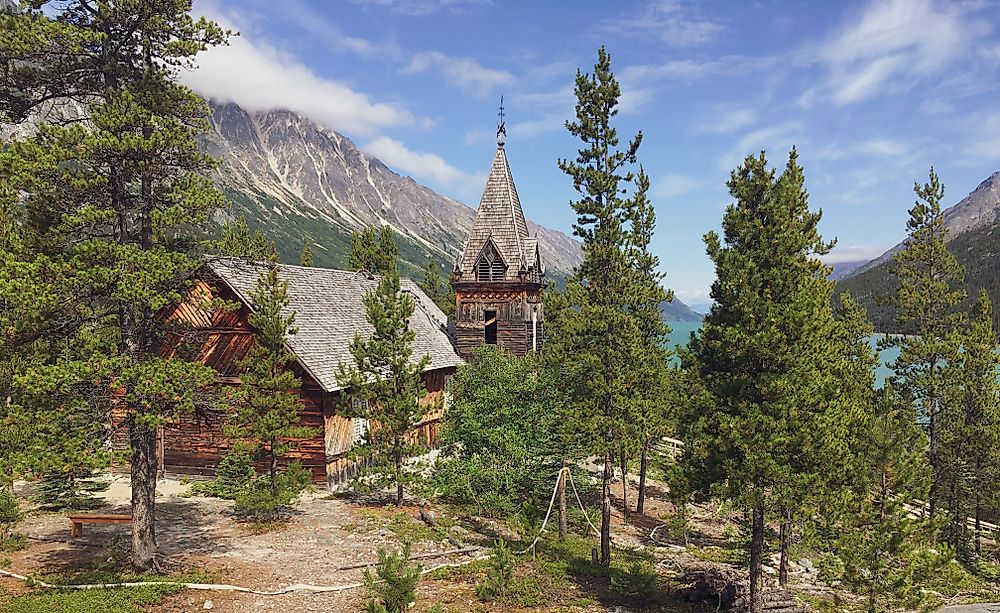Where Did The Klondike Gold Rush Happen?

On August 16, 1896, miners in Northwest Canada, specifically in the Klondike region of the Yukon Territory, discovered deposits of gold. When news of the discovery spread to regions in the United States (US), it led to a mass migration of prospectors, primarily from the cities of San Francisco and Seattle, which came to be known as "The Klondike Gold Rush." The number of prospectors that migrated is estimated to have been 100,000 or more, and the migration was considered a stampede as prospectors raced to be the first to claim their stake in the fertile gold fields. The migration to Canada's Yukon Territory was made through three main routes: the all water route; the Dyea/Skagway routes; and the All-Canadian routes.
All Water Route
The all water route started from the port in Seattle, travelling north by boat along the coast of the Pacific Ocean, around the Gulf of Alaska to the port of St. Michael, Alaska. Prospectors then disembarked and made the remainder of the journey on smaller boats up the Yukon River to Dawson City. The all water route was considered to have been the easiest because it was the least physically demanding way to get up to the Yukon Territory, at least in comparison to the other two routes.
Dyea/Skagway Routes
Dyea and Skagway were two ports located southeast of Alaska, and to reach them the prospectors would first have to travel by boat. Upon reaching either of the ports, the rest of the trip to Dawson City, which was located at the mouth of the Klondike River, had to be made on foot, with the help of either pack animals or sleds. Those who travelled to Skagway followed what is known as the White Pass traill and later earned the nickname the Dead Horse Trail, which ran through the Alaska Boundary Range on the border of Alaska and the Canadian province of British Columbia, eventually leading to the Yukon River. For those who travelled to Dyea, the route used was called the Chilkoot Trail, which also ran through the Coast Mountains to the province of British Columbia. Each prospector who chose either of these two routes was required by Canadian authorities to bring one year’s worth of food and supplies in order to avoid starvation.
All-Canadian Routes
The All-Canadian routes passed mostly through Canadian territory rather than using travelling through ports in southeast Alaska, like the other routes. Most opted for the All-Canadian routes in order to avoid American customs as well as any conflict from the ongoing disputes between the US and Canada regarding the ports of Dyea and Skagway. The majority of these prospectors were either British or Canadian, and started in places such as Ashcroft, British Columbia or Edmonton, Alberta, and made their way to the Yukon River through multiple routes with the same challenges as those faced by the prospectors who used the Dyea and Skagway routes.
Challenges and Aftermath
Prospectors of the Klondike Gold Rush faced an extremely challenging trip through the Dyea and Skagway routes because portions of the trails were covered with several feet of thick snow or ice. The ascent was painfully exhausting because each prospector had to carry their supplies up the trails in batches, which meant that they made the trip up and down the slopes about 30 to 40 times. Many died while others gave up along the way, eithering turning back or settling in smaller towns along the way. The number of prospectors who completed the journey is estimated at approximately 30,000, compared to the 100,000 who started the trip. Disease, starvation, injuries, exhaustion, isolation, and weather conditions took many lives. Additionally, those who did reach the Klondike region had to contend with seven months of winter and darkness, which made survival extremely difficult. News traveled slowly, and the prospectors from San Francisco and Seattle that began the trip to the Klondike region in the Yukon Territory in 1897, meaning that they would not reach Dawson City until the summer of 1898, had already missed out on many of the best opportunities to strike gold.











